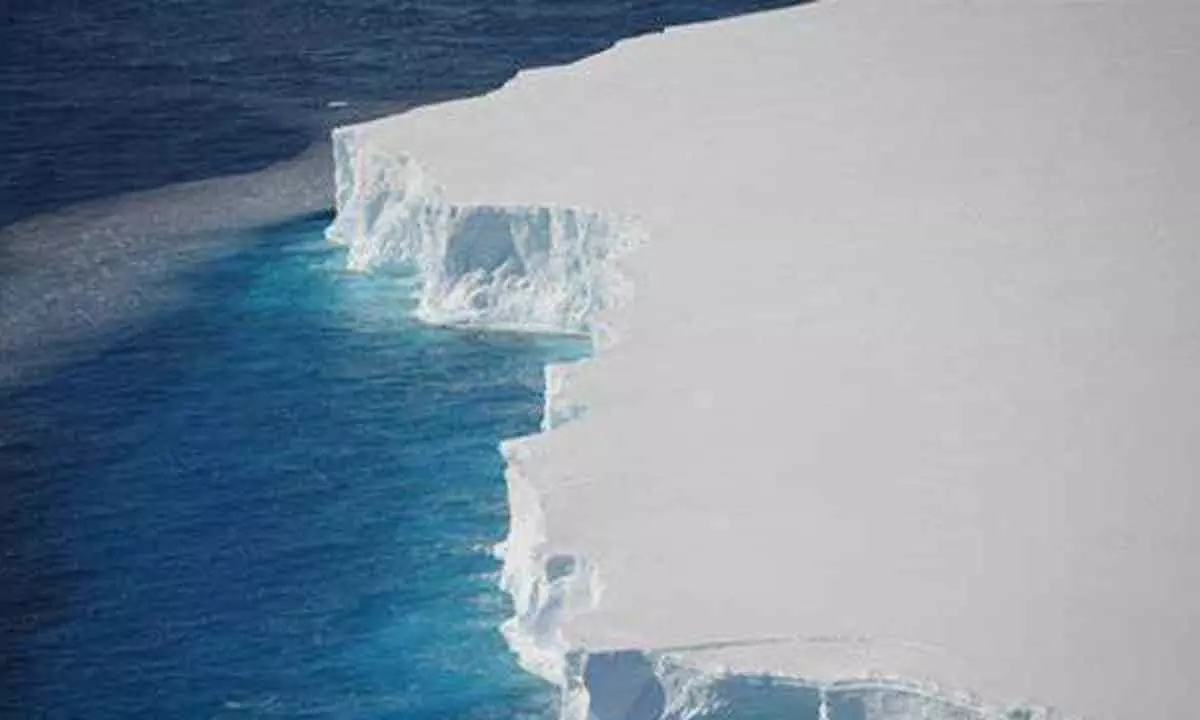Antarctic ice shelves thinner than previously thought says Study

As global ice dams begin to weaken due to warming temperatures, a new study suggests that prior attempts to evaluate the mass of the huge floating ice shelves that line the Antarctic ice sheet may have overestimated their thickness.
New Delhi : As global ice dams begin to weaken due to warming temperatures, a new study suggests that prior attempts to evaluate the mass of the huge floating ice shelves that line the Antarctic ice sheet may have overestimated their thickness.
The research, published in the Journal of Glaciology, is the first large-scale study of its kind to compare ice shelf thickness data from ice-penetrating radar measurements to thickness data estimated from contemporary surface elevation measurements.
By juxtaposing vast datasets of 20 of the 300 total separate ice shelf systems that surround about 75 per cent of the Antarctic ice sheet, researchers from The Ohio State University found that on average, the Antarctic ice shelves are nearly 6 per cent thinner than previous studies had assumed, a difference of about 17 metres.
This may seem like a small shift in scale, but typical ice shelves can be anywhere from 50 to 600 metres thick. The study said that while prior assumptions about the ice shelves’ thickness were correct on a large scale, their accuracy varied greatly on a small scale, such as for individual structures like valleys or crevasses that are either too narrow or too small to be measured accurately.
Yet as ice shelves play a large role in stabilising the Antarctic ice sheet as well as Earth’s complex climate system, getting an accurate estimation of their size is essential for calculating how their melt could contribute to sea level rise, said lead author Allison Chartrand, from the University.
“Because the Antarctic ice sheet is so big, a 1 per cent misestimation in how fast it’s melting could mean inches or feet of sea level rise that we’re not accounting for,” she said. “So it’s really important to be as accurate as we can.”
Even the most minute changes to Antarctica’s ice shelves could pose a significant threat to coastal communities, Chartrand said, as a few inches of significantly displaced ice shelf could cause thicker ice to flow into the ocean and potentially cause some coastlines to retreat several feet.
One of the largest discrepancies the study found was that the assumptions used to estimate ice shelf thickness in previous research sometimes exaggerated ice shelf thickness in some areas, and at other times understated it, said Chartrand.
Overall, the study concludes that more abundant and accurate data is needed to enable better predictions of ice shelf loss in Antarctica, as the ultimate goal of their work is to improve observations of the processes that contribute to sea level rise, she noted.














